'Big Short' investor Michael Burry warned stocks would crash and rallies wouldn't last. Here are 6 of his key tweets in 2022, and what they meant.
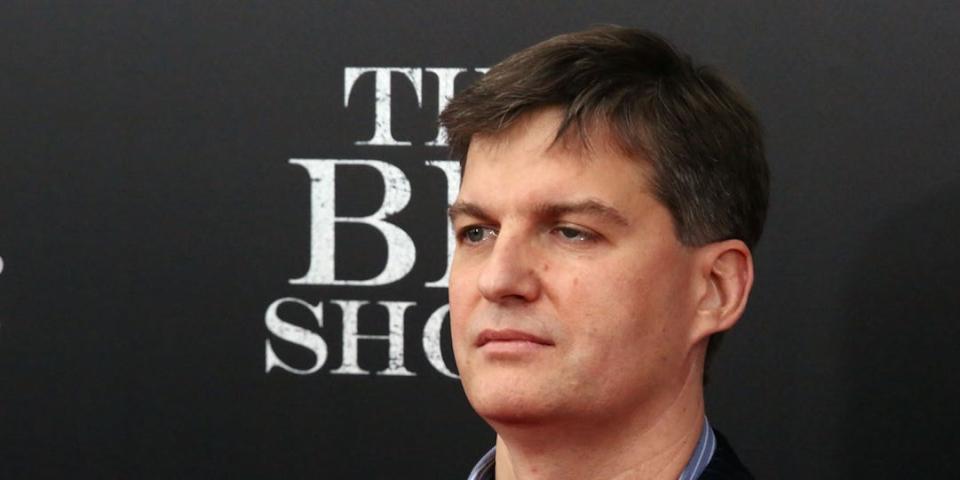
"The Big Short" investor Michael Burry suggested the S&P 500 could plunge below 1,900 points.
The Scion Asset Management chief based his prediction on how past crashes have played out.
Burry said brief rallies were likely, and joked about his penchant for premature predictions.
Michael Burry, the hedge fund manager of "The Big Short" fame, rang the alarm on the "greatest speculative bubble of all time in all things" in the summer of 2021. He warned the retail investors buying up meme stocks and cryptocurrencies that they were headed towards the "mother of all crashes."
The Scion Asset Management chief's grim prediction may be coming true, as the S&P 500 and Nasdaq indexes tumbled by 19% and 33% respectively in 2022. In tweets posted in May 2022 then subsequently deleted, Burry took credit for calling the sell-off, explained why he expects further declines, and cautioned against buying into relief rallies.
Here's a roundup of Burry's best tweets about the stock-market slump:
The pandemic crash was just the start
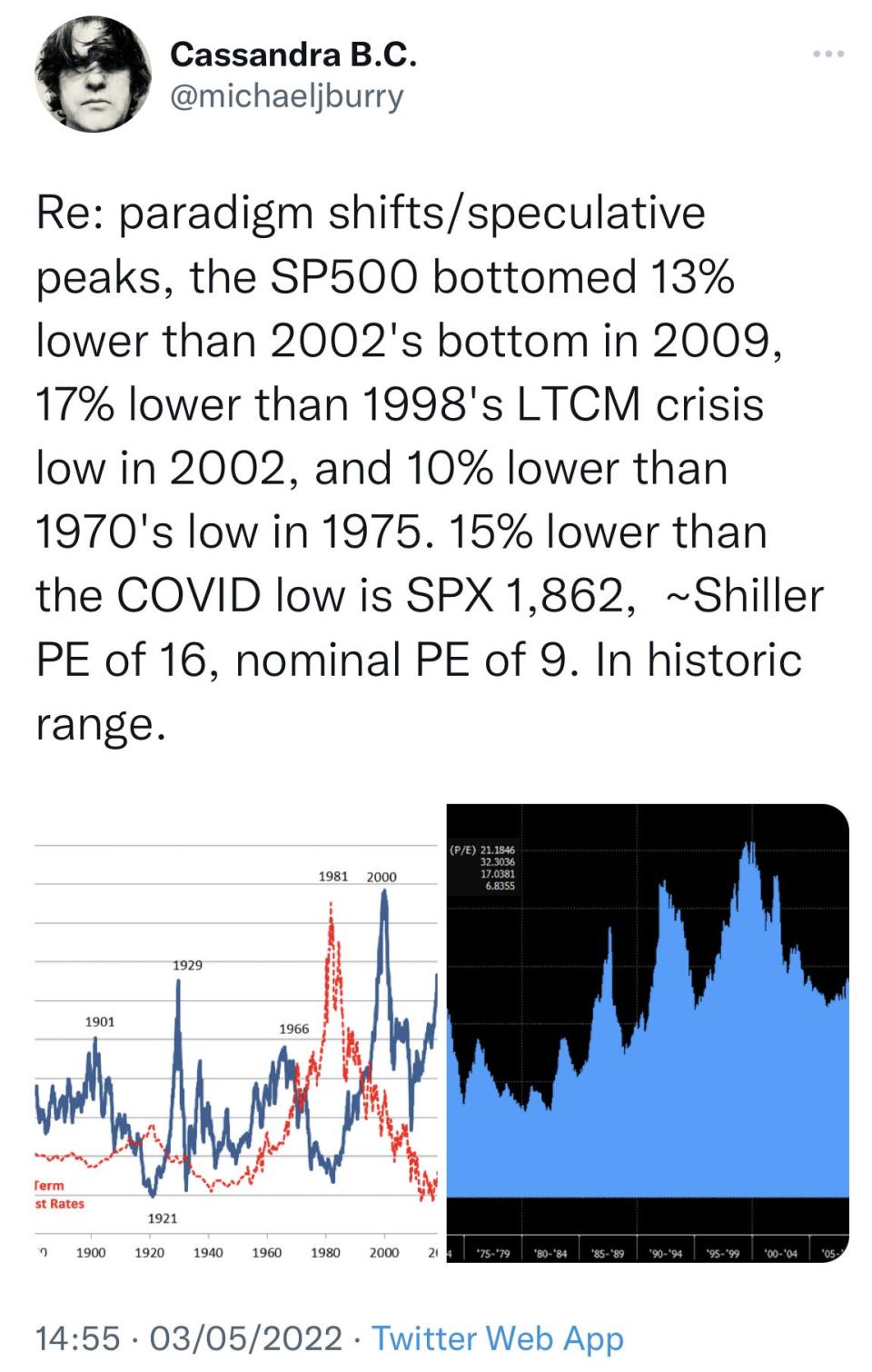
The S&P 500 index has rebounded strongly from the pandemic crash in the spring of 2020, rising from a low of 2,192 points to around 3,800 points today. However, it could halve in value to below 1,900 points over the next few years, Burry tweeted on May 3, 2022.
When the S&P 500 has crashed in the past, it has traded lower several years later, Burry noted. He pointed to the index bottoming 13% lower in 2009 than it did in 2002, 17% lower in 2002 than it did during the Long-Term Capital Management fiasco in 1998, and 10% lower in 1975 than in 1970.
If the benchmark index follows that historical pattern, it could trade 15% lower than its level in the spring of 2020, Burry said.
There may be epic but short-lived rallies
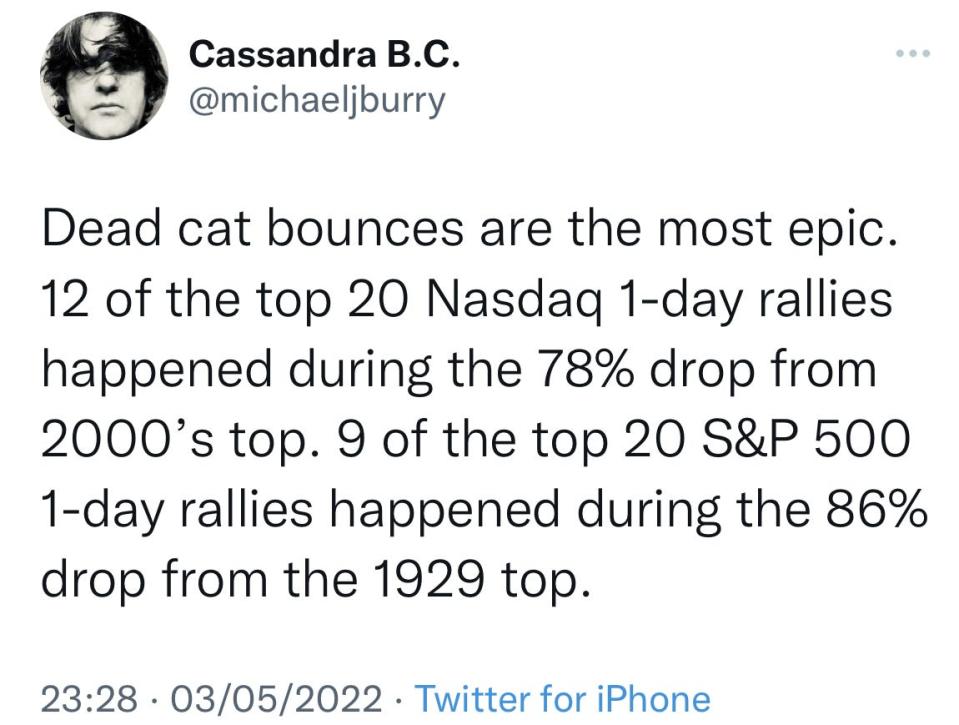
A "dead cat bounce" refers to a temporary rebound in stock prices after a significant fall, often because speculators buy shares to cover their positions.
They often occur during major declines in the stock market, Burry said in a May 4 tweet. The implication is that investors shouldn't get their hopes up about any rallies in the coming months, as they're likely to be brief respites that won't result in a market recovery.
Burry noted that 12 of the 20 largest one-day rallies in the Nasdaq index took place as the dot-com bubble burst, while nine of the S&P 500's 20 biggest one-day rallies occurred in the aftermath of the Great Crash in 1929.
Don't be fooled by stocks rebounding
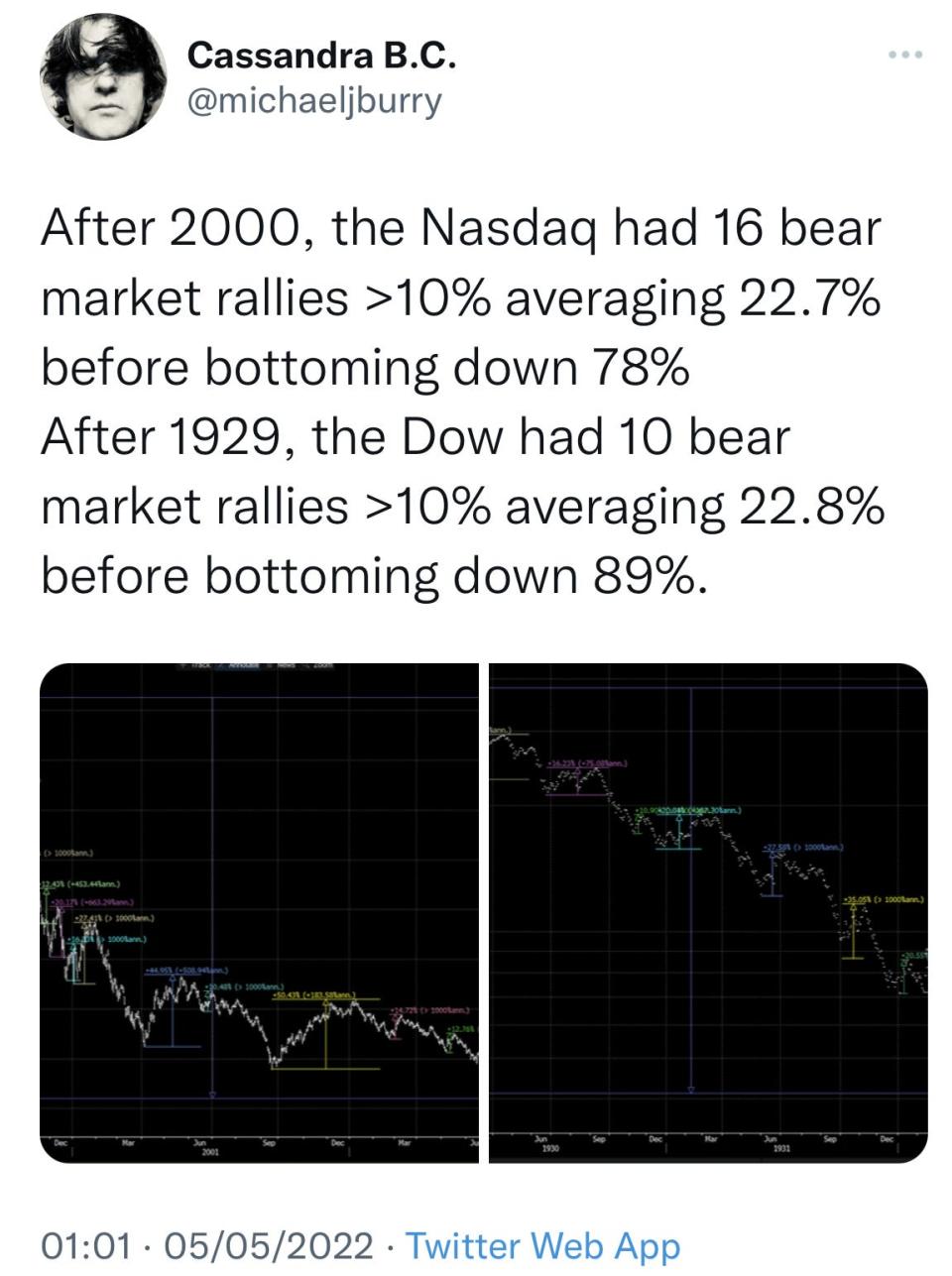
Stocks could stage multiple rallies before the crash is over, Burry warned in a May 5 tweet.
He noted that after the dot-com bubble burst, the Nasdaq rallied 16 times by more than 10% — gaining on average 23% each time — on its way to a 78% decline at its nadir.
Burry also emphasized that after the Great Crash of 1929, the Dow Jones index rallied 10 times by more than 10%, rising by an average of 23% each time, before bottoming at a 89% decline.
Stocks are on a dangerous trajectory
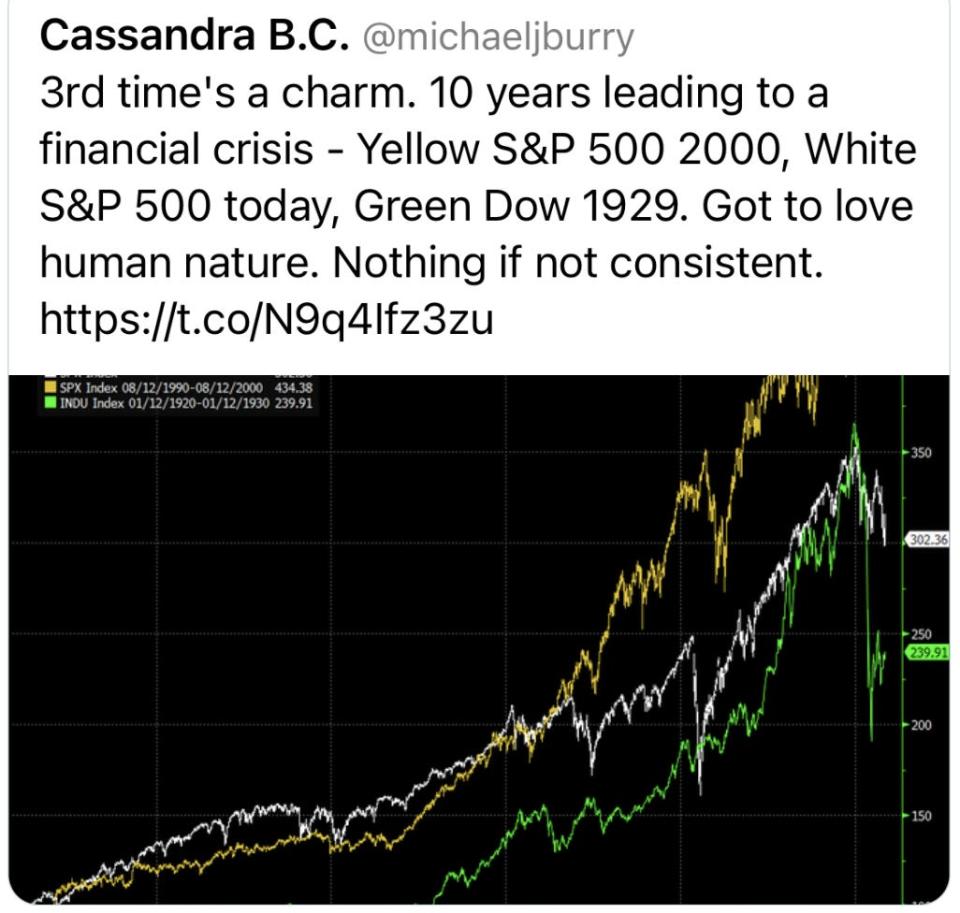
The US stock market appears to be following the pattern of previous bubbles, leaving it poised for a monumental crash, Burry noted in a May 8 tweet.
The Scion chief pointed to the S&P 500's trajectory over the past 10 years, noting it was strikingly similar to the index's chart for the decade leading up to the dot-com crash, and the Dow's chart for the 10 years before the Great Crash of 1929.
Burry suggested that human nature was behind the consistently decade-long buildups, and implied that history is repeating itself.
Burry predicts correctly, but early
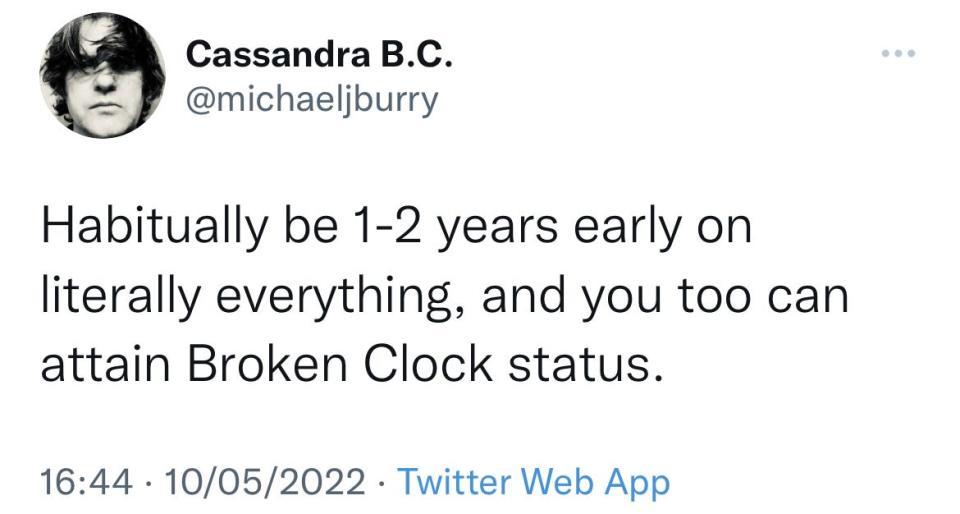
Burry appeared to take a victory lap in a May 10 tweet, suggesting he believes the stock-market crash that he's been warning about has finally arrived.
The Scion boss joked he was early with his prediction, just as he was during the mid-2000s US housing bubble.
Burry also nodded to Elon Musk calling him a "broken clock" last year, after the Scion chief bet against Tesla stock, predicted it would collapse in value, and questioned Musk's motives for selling his company's shares.
Stocks are set to tumble a lot further
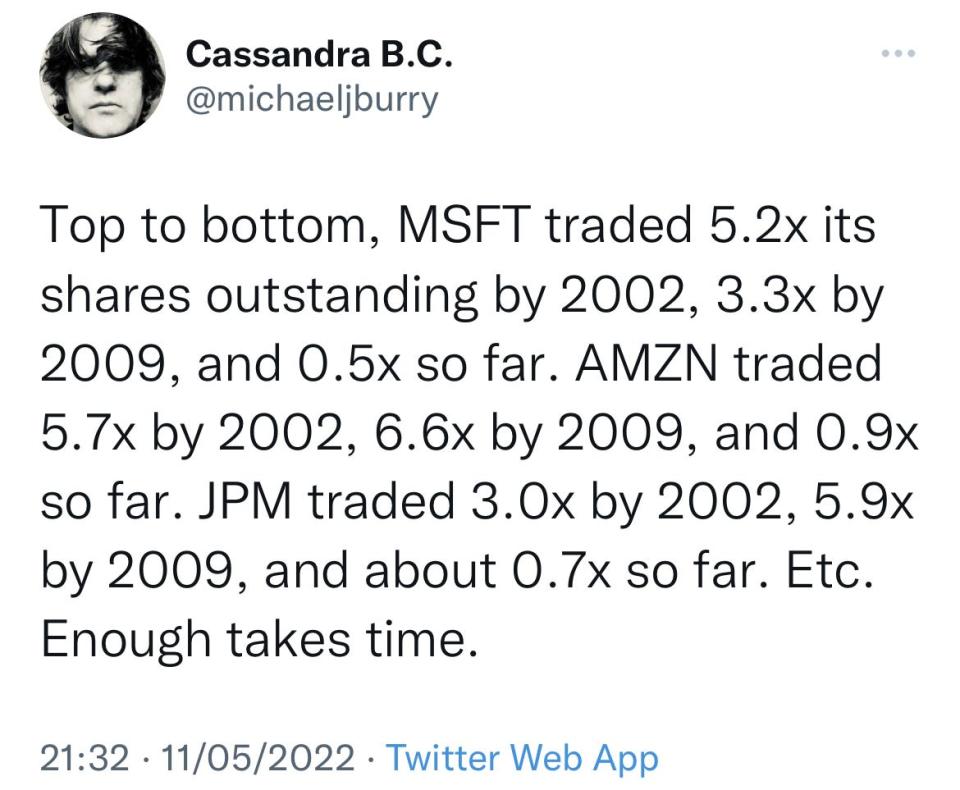
Investors can expect stocks to fall a lot further, Burry warned in a May 11 tweet.
The investor noted that 5.2 times Microsoft's outstanding shares were traded between the software stock's peak during the dot-com bubble and its bottom in 2002. That figure was 3.3 times during the financial crisis, but had only reached 0.5 times at the time of his tweet.
Burry noted it was a similar story with Amazon and JPMorgan, indicating it could be a while before those stocks and others bottom out.
Read the original article on Business Insider

 Yahoo Autos
Yahoo Autos 